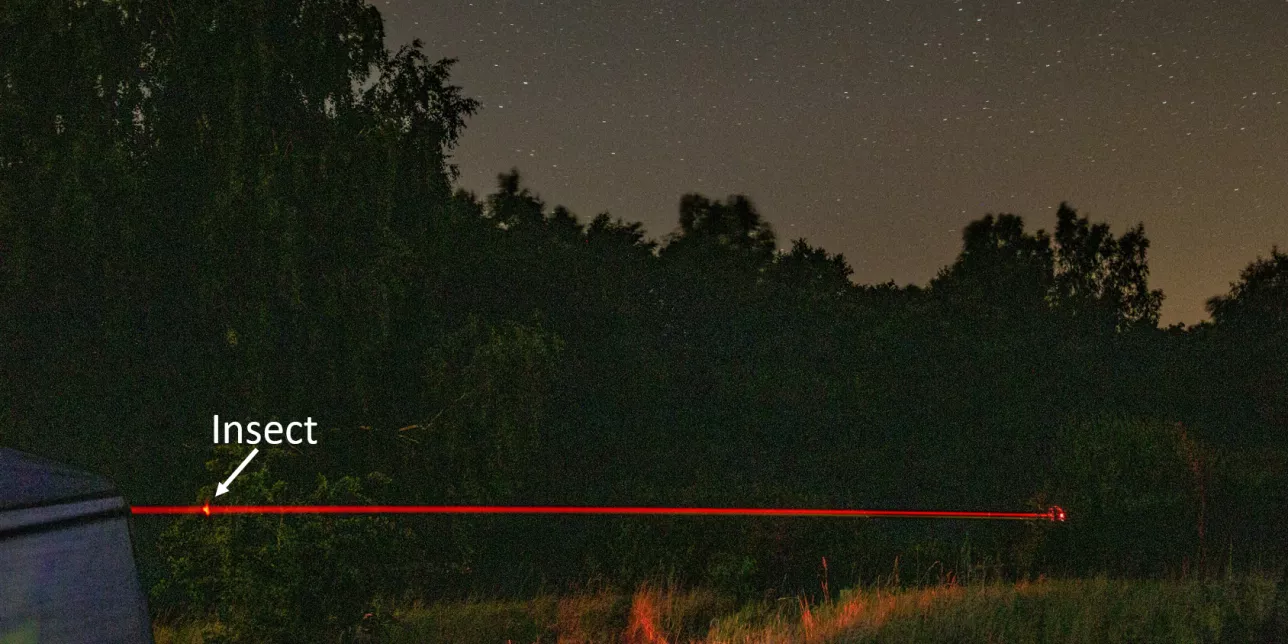Insects play a key role in the ecosystem and are essential for biodiversity. Detecting and monitoring the millions of insects in our environment is a major challenge. The use of lasers and modern photonics makes it possible to detect insects in large numbers remotely without trapping them. Insect numbers have declined drastically in recent decades. Laser measurements can provide new insights into what measures need to be taken to save the insects.
In this thesis, a hyperspectral Scheimpflug lidar (laser radar) was developed and tested for insect measurements. As opposed to a time of flight lidar, a Scheimpflug lidar measures the distance by triangulation. This means that the light reflected from different distances is imaged on different parts of a camera sensor. The lidar was placed on a field while the beam from the lidar unit shone over the field. Insects flying through the beam reflected some of the light, which was detected by the lidar. In addition to distance, a hyperspectral lidar can also measure the spectrum from the backscattered light over large distances. When broadband light hits an object, certain wavelengths may resonate with molecular absorption bands or nanostructures, causing differences in the spectrum. Light hitting a thin layer of a transparent material can exhibit an effect called thin film interference. This effect is behind, for example, the rainbow colors of soap bubbles or the color of a pigeon's neck. The effect arises from reflections from the top and bottom surfaces of the layer that coincide and cause some wavelengths to cancel each other out while other wavelengths reinforce each other. A so-called thin film interference spectrum can then be used to calculate the thickness of the layer.
The hyperspectral lidar was then tested in the field where the wing thickness of a free-flying insect at 85 m could be measured. The resulting thickness is 499.6 nm +/- 2 nm, which is a remarkably high accuracy and these results can bring remote monitoring of insects to a new level.
This work was done by Lauro Müller
Supervised by:


